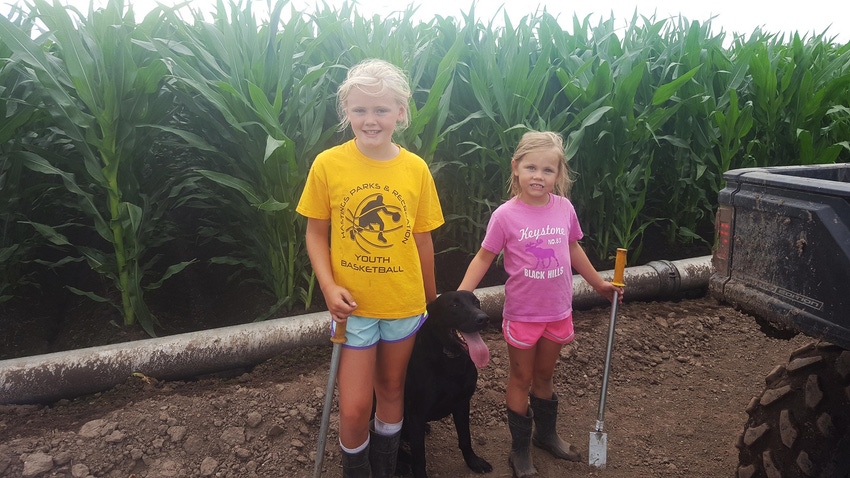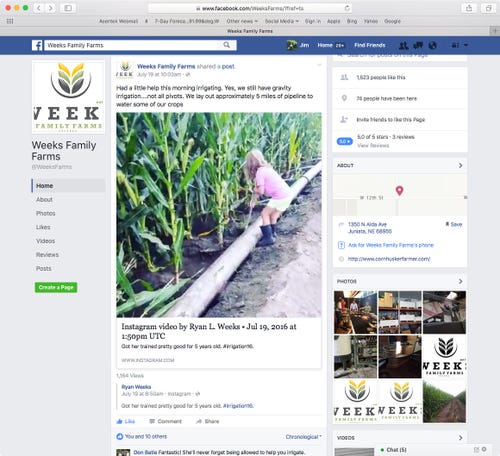September 12, 2016

Think Different
Julie Kenney returned to farming after 10 years in marketing and communications with Pioneer Hi-Bred. While that background was helpful, she is quick to say it isn't necessary for getting active in social media.
As she points out:
No one is better suited to share what is happening on your farm than you.
If you are open, friendly and willing to interact, people will be comfortable asking questions.
You don't have to be an expert on GMOs or pesticides or animal care, but you can point to those who are.
Start where you are comfortable, whether Facebook or Twitter or something else, and work from there.
If you want training, contact commodity and other agricultural groups. Raise your hand and indicate an interest.
-------------------------------------------------------------------
Northeast Iowa farmers Kyle and Kerri Mehmen started their Facebook page to communicate with family, friends and landowners.
It morphed into much more, with nearly 2,000 likes and a recent solar panel post that garnered 30,000 likes.
Nebraska farmer Ryan Weeks started out with Facebook in 2008 and soon found himself a regular "agvocate" on Twitter, active on AgChat and now is adding Instagram.
Julie Kenney shares her and husband Mark's family farming operation in Iowa with Facebook, Twitter and through media interviews and public appearances.
Talking ag with consumers
These farmers have all interacted with tens of thousands of consumers that they would otherwise never met. In each case, they know this connection is vital to their future as farmers. They are talking the walk every day on their farms.
"Farmers have a unique voice, and we haven't been as vocal as we need to be," says Kenney. "We have two young children, and we hope they will be the sixth generation farming our land. In order for them to have the freedom to farm it, we need to do a better job communicating with the public."
Kenney is one of 11 Iowa farm women communicating with consumers through Common Ground (http://findourcommonground.com), a program supported by Iowa Corn, the Iowa Soybean Association, the National Corn Growers Association and the United Soybean Board. She has also reached out to consumers to answer their questions about food through the Iowa Food and Family Project.
"A lot of people don't understand what we do and why," says Weeks. "A small minority of consumers can drive trends that can force change in our production systems quickly. Social media is a good way to reach some of them."
Weeks notes that it is surprising how little is known about farming and how easy it is to change that through social media. When he posted about growing popcorn on Facebook, a friend from Chicago responded that she thought popcorn was simply differently processed field corn.
"At that moment, I went wow!" recalls Weeks. "How simple a thing for a farmer to explain what we know and grew up with. At a time when the trend is to stay away from processed food, here was a chance to explain different types of corn, and that popcorn was not processed. Social media offers a huge opportunity to educate consumers on even simple things."
Don’t let anti-ag activists tell our story
Kyle Mehmen points out that agriculture's story is being told, often incorrectly. "We have a responsibility to tell it correctly," he says. "The personal feel of Twitter and Facebook lets us get one on one with non-farm folks. I have to believe that long term the more people who understand the message coming out of our mouths, the better."
Kerri Mehmen sees social media as an opportunity for good PR for agriculture, but also as an investment in their farm’s future. "A big portion of our landowners are a little older," she says. "Social media is a way to reach their children, the next generation that is likely to own the land we farm. It is important to educate them on what we are doing on Mom and Dad's farm."
Power of video storytelling
In addition to daily farming updates on Twitter and Facebook, the Mehmens have begun posting their videos to YouTube. They are also starting a website to provide more in-depth background about the farming operation and other business entities, including their fertilizer and chemical retail operation. Neither has had any formal training in any aspect of social media, but are exploring and learning as they go.
Weeks also is self-taught. Today he maintains a personal Facebook page and one for Weeks Family Farm, and he has more than 6,800 followers on Twitter. He too posts videos of everyday farming, such as his young daughter helping open gravity irrigation pipes. Weeks has served on AgChat's board (http://agchat.org) and has worked to get other farmers involved in social media. A new member of FamilyFarms Group, he gave a presentation to its members at their winter meeting.
"I went from wanting to connect with other farmers to a greater desire to let the general public know about farming," says Weeks.
He sees social media as a way to get outside the bubble of agriculture and connect to consumers, noting that AgChat's monthly FoodChat discussion attracts dietitians and foodies.
We need to listen
"I don't have the million dollar answer as to how to connect with consumers," he says. "Too often when consumers challenge us, it can end up being an argument."
Weeks argues that the secret to successful social media interaction is the secret to any successful communication. "We need to listen," he says.
About the Author(s)
You May Also Like




